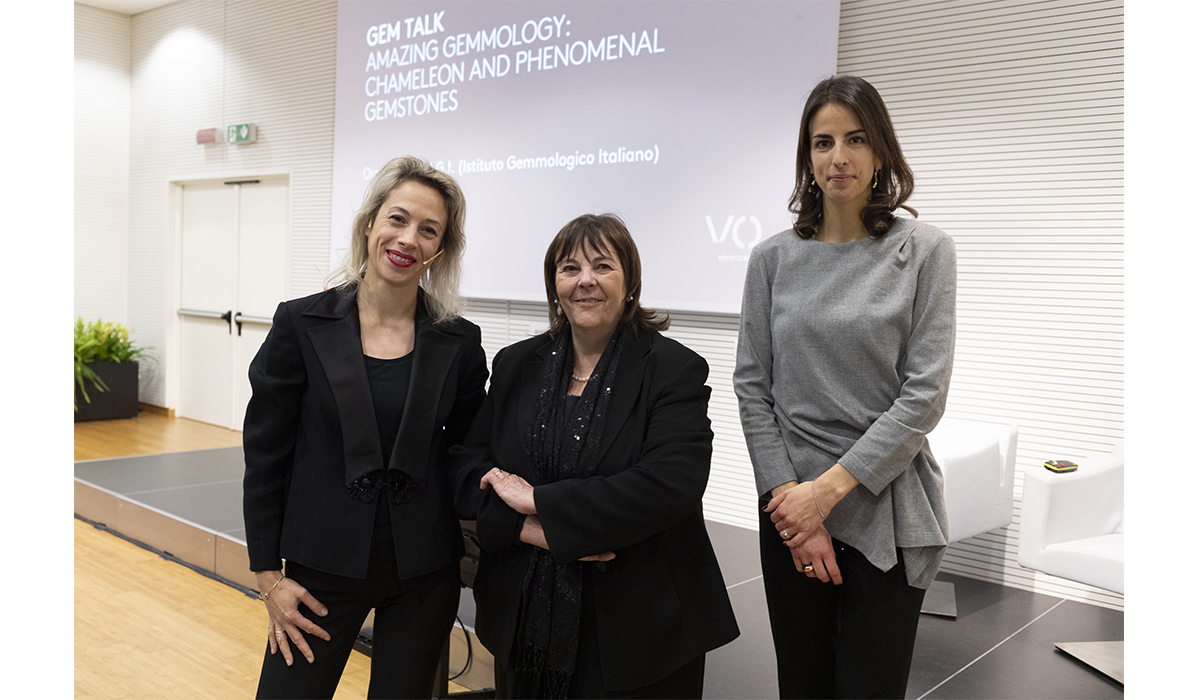Vicenzaoro Highlights, January 2023: The Optical Phenomena of Gems
From the “alexandrite effect” to the chameleon diamond. A journey into the fantastic world of the iridescent effects of uncommon gems
Orthoclase moonstone, milky quartz with sunflower effect, obsidian with a silver and/or gold sheen, star corundum: these are just some of the countless gems known as “phenomenal” due to that particular and somehow magical “dialogue” they manage to establish with light. This was discussed yesterday at the Gem Talk entitled “The surprising characteristics of certain gems: chameleon and phenomenal gems”, the format with which IGI (Italian Gemological Institute) spreads gemological culture dur- ing the editions of Vicenzaoro. Loredana Prosperi - Director of IGI Milan, Lucia Gori - Teacher at IGI Milan, and Ludovica Faldi - Laboratory Analyst at IGI Milan, took the audience on a fascinating journey of optical effects to reveal how light is able to transform the beauty and even the essence of a gemstone. Gori's brilliant excursus on the phenomenon of gemstones “affected” by asterism, fluttering, opalescence and iridescence (to name but a few particularly desirable optical properties), introduced Faldi's lecture on another optical phenomenon that collectors have particularly come to appreciate in recent years: metamerism, commonly called the “alexandrite effect” after the most famous stone in this category. This refers to those gems that are neither extremely pure nor all too common, which, when passing from natural to artificial light, totally change color. King of this alchemic category of iridescent wonders is the chameleon diamond, one of the most mysterious stones in the world, of which the only thing we know for certain is that it is extremely rare. Mystery and rarity are due to their unusual ability to change color temporarily when heated or kept in the dark. The causes of this behavior are still unclear since this fascinating category of diamonds has only recently been discovered. In fact, the first extensive research on a single large specimen was published in 1995.






